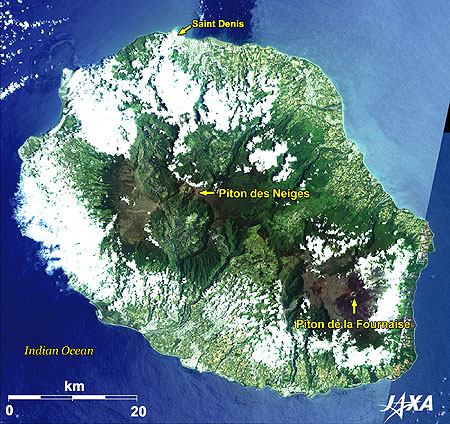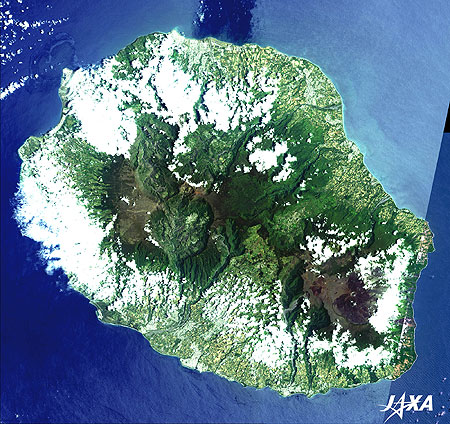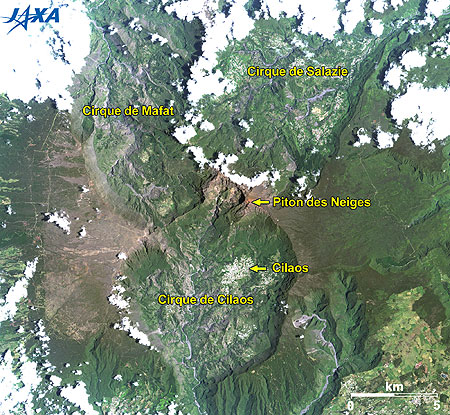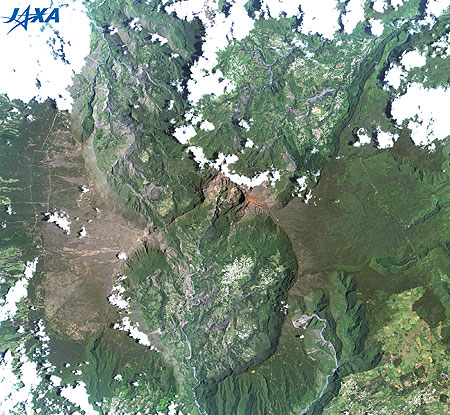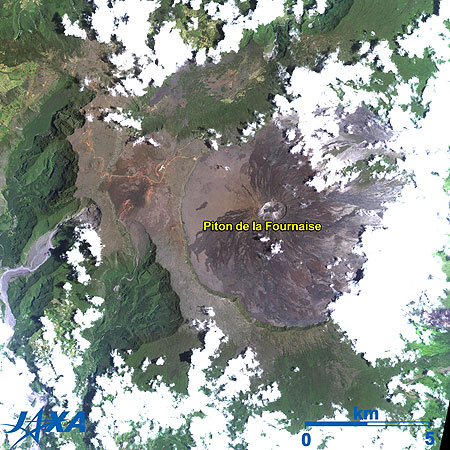Seen from Space 2011
Réunion: A Volcanic Island in the Indian Ocean
|
Fig. 1. Full View of Réunion Island
Figure 1 shows a full image of Réunion Island in the Indian Ocean, located 700 km east of Madagascar, as observed by ALOS (“Daichi”) in December 2009 (the easternmost edge of the island was observed in October). Like the Hawaiian Islands, Réunion and Mauritius, located 200 km further east, are both volcanic islands born on hotspot in the ocean bed where magma rose as the result of tectonic movements. The outstanding natural landscape of Réunion was registered to the World Heritage Site of UNESCO in 2010 as “Pitons, cirques and remparts of Réunion Island.” Fig. 2. Enlarged Image of Calderas Surrounding Piton des Neiges
Piton des Neiges (kmz, 3.88 MB, Low Resolution) as seen on Google Earth. Figure 2 is an enlarged image of the three large calderas (Cirque de Mafate, Cirque de Cilaos, and Cirque de Salazie) surrounding Piton des Neiges. Fig. 3. Enlarged Image of Piton de la Fournaise
Piton de la Fournaise (kmz, 3.41 MB, Low Resolution) as seen on Google Earth. Figure 3 in an enlarged image of Piton de la Fournaise, which is currently in a period of frequent volcanic activity. The whole summit area is covered by lava and looks grey or dark brown without any sign of vegetation. The most recent eruption occurred on October 14, 2010, and many tourists visited to watch the lava flow closely. 
Newly Registered World Heritages in 2010In August 2010, UNESCO announced on the Web seventeen newly registered World Heritage sites and later added six more sites. One of which is Réunion, whose unique landscape and valuable ecosystem were recognized. There are a total of 911 World Heritage sites to date - 35 of which belong to France. Reference Sites:Explanation of the Images:
AVNIR-2 has four observation bands. The color composite images are produced by assigning red to Band 3 (610 to 690 nm), green to Band 2 (520 to 600 nm), and blue to Band 1 (420 to 500 nm). The resulting images have natural coloring as if seen by the naked eye. Each color indicates the following ground objects:
Related Sites
|
